What to Look for in a Sustainable Producer

Supporting sustainable organizations is a great way to do your part in helping the environment. The Tennessee Sustainable Spirits Program is intended to identify breweries, wineries, and distilleries that are going above and beyond when it comes to sustainability. The first way to identify a sustainable producer in Tennessee is by spotting the logo!
This logo identifies that the facility you are visiting has committed to becoming a recognized sustainable producer. Even if an organization is not a member, they may be doing their part in reducing their impact on the environment. As a consumer, you may not see all “back of house” operations, but you can still identify sustainable operations while visiting. The tabs below offer a few tips on how to identify whether a producer is incorporating sustainable practices into their operations.
Reducing water consumption, protecting water resources, and reusing water are great ways in reducing ecological impact while creating a healthier environment. Some tips on identifying these practices include:
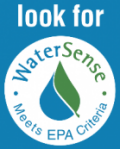
- In the bathroom, look for low flow toilets and faucet aerators and sensors. WaterSense labeled toilets use 20% less water compared to standard commercial toilets. While washing your hands, note if the sinks are automatic or manually operated and/or if the water is aerated (look for the bubbles) if the faucets are WaterSense labeled, they can reduce the amount water used by 30% compared to conventional faucets.
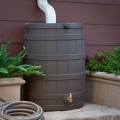
- Look for rainwater capture systems. An easy way to identify this is by looking at the building’s rain gutters. Some organizations collect water from their gutters and use that water for other purposes such as landscape irrigation and cleaning. Using collected rainwater for purposes that would have normally used domestic utility water can help in reducing the demand on water infrastructure.
Both ambient and indoor air quality can have impacts on the environment and human health. Below are some ways you can identify if a facility is working on ways to improve air quality.
- Look for low Volatile Organic Compound (VOC) loads indoors. VOCs are gasses that emit off solid and liquid materials. These compounds can cause short-term and long-term health effects. A lot of these compounds can be found in carpeting, paint, and furniture. If a building has minimal carpet, minimal treated wood products, properly stored cleaning chemicals, and adequate ventilation it is safe to assume that your exposure to VOCs are minimal.
- Identify alternatively powered equipment. Most production facilities use equipment like forklifts to move around materials. Most forklifts run off propane which contributes to pollution and air quality issues but there are alternatives. Conventional forklifts can be replaced with manually powered pallet jacks and even electric powered forklifts.
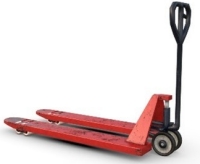
Example of a manual pallet jack.
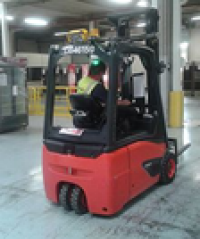
Example of an electric forklift.
Sustainably managing materials through minimizing resource consumption, maximizing reuse, adopting diversion strategies and recycling can reduce impacts to land resources and the environment. As a consumer, look at how waste is being managed and how products are packaged.
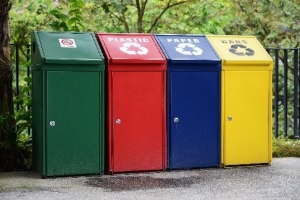
- Identify recycling options while visiting. See what type of materials (if any) are being recycled, an easy way to identify these options is by looking for designated recycling bins that are labeled with what can be recycled. The image here shows an example of recycling bins labeled for what is accepted.
- Look for alternative packaging materials. Products can be packaged in several ways but if the package material cannot be recycled it only contributes to waste generation. Most beverages are packaged in plastic, glass, and aluminum cans. These materials can be recycled in most regions. Next time you’re visiting a producer, ask if their packaging materials can be recycled in their area or at their facility.
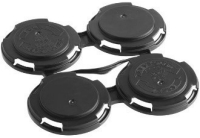
- Seek out packaging take back programs. Some reusable packaging materials can be taken back by producers for reuse. Can holders, bottles, and even cardboard trays can sometimes be reused. Ask if the producer offers any take back programs. Shown in the image are typical can holders that can be reused.
Energy efficiency and renewable energy alternatives play a role in reducing air pollution and offset usage from power providers.. Below are some easy ways to identify energy efficiency and renewable energy practices:
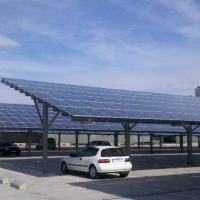
- Look for alternative energy sources. Look Up! Solar panels can reduce the amount of energy sourced from the local grid which comes from coal and natural gas. Additionally, solar energy does not produce greenhouse gas emissions which can reduce pollution associated with conventional energy sources. Shown in the image is an example of solar panels and how they can be installed somewhere other than a building.
- Look for the Energy Star logo. The Energy Star program is a federal government-backed program that certifies energy efficient appliances, buildings, and industrial plants. Look for appliances with the Energy Star logo and most certified businesses will display their designation.
- Identify energy efficient lighting systems. An efficient system can use a combination of LED lighting and occupancy sensors. Lighting sensors enables the lights to only turn on when the room is occupied by a person. An easy way to identify lighting sensors is to walk into a vacant bathroom or room and see if the lights turn on automatically. Residential LED lights alone use at least 75% less energy compared to incandescent lights.
- Can you charge your car? A way to promote and encourage the use of electric vehicles is by providing charging options for electric vehicles which can reduce local air pollution. Totally electric powered vehicles do not produce any emissions. Charging stations can be found here.
Sourcing local ingredients can help in reducing pollution associated with transportation emissions. Ask your producer about the ingredients used in their products and where they come from. Most producers advertise that their products are made with locally sourced ingredients and it may be displayed on their packaging and advertising.
Conducting community engagement through educational opportunities and/or clean ups to improve the local environment, allows an organization to have a positive social and environmental impact on their surroundings. Local businesses can be a great steward to the community. Check out ways a local business can have a positive impact on the community:
- Does the business conduct outreach by supporting sustainability in the community by attending and/or participating in events that support education on sustainability topics? This can be seen in several different ways such as participating in environmental events like Earth Day or educating the public on sustainability through their media.
- Are they offering clean up events? Some organizations incentivize local community cleanup events by providing materials and giving away a drink when volunteers participate in a cleanup event.
- Look for community spaces. Businesses can provide their facilities as a place for local community organizations to meet and host community events.
- Lastly, a business can also give back to the community by providing financial or even physical support such as volunteering time to local community events.
This Page Last Updated: December 13, 2023 at 10:56 AM